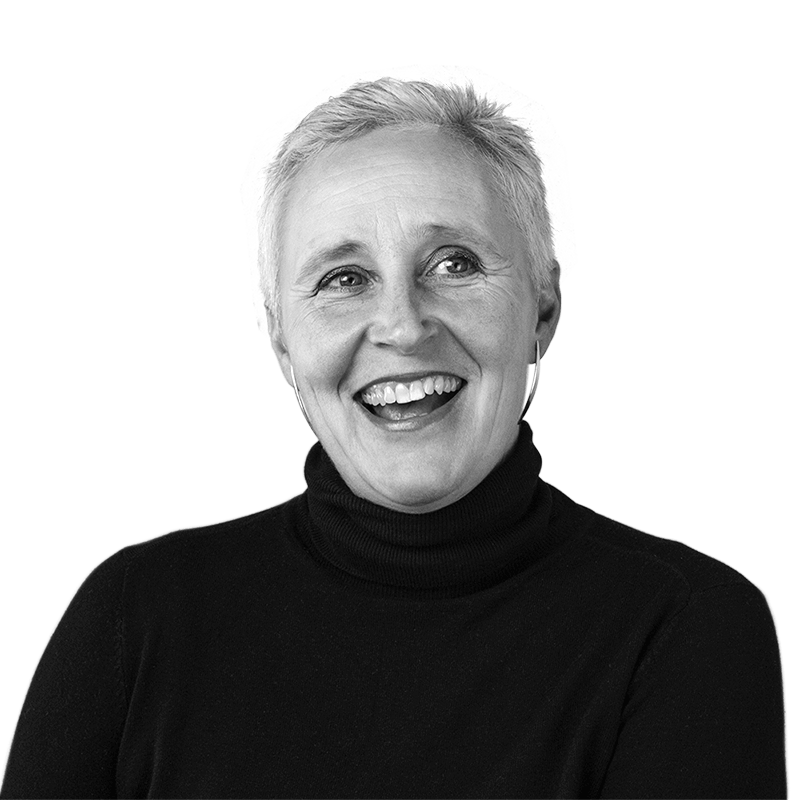Ageism: a shocking act of self-harm
11 June, 2019 Reading: 5:00 mins
As humans we are programmed from birth to respond to faces. Before she can even focus her eyes the first thing any six-week-old baby can see clearly is the face of her parent. As we grow up evolution and socialisation mean we are heavily conditioned to respond to facial cues including the tiniest change so it stands to reason that we make instant, unconscious decisions about people based on their apparent age - triggering different biases.

As humans we are programmed from birth to respond to faces. Before she can even focus her eyes the first thing any six-week-old baby can see clearly is the face of her parent. As we grow up evolution and socialisation mean we are heavily conditioned to respond to facial cues including the tiniest change so it stands to reason that we make instant, unconscious decisions about people based on their apparent age - triggering different biases.
Frankly in our industry those biases seem clear: there’s a perception that younger people are more creative, energetic and just better in marketing and advertising, and that the heads of those over 40 or 50 are too full to be of use. But beware of putting silver-hairs like me – or anyone – in a box!
It’s often true that creative directors, account directors and leaders are probably older and will find their heads full of Board-level issues, will often be called away from their desk when there’s a larger work crisis of some kind to sort out, and are probably parents – meaning they do have a few potentially powerful distractions. But huge things like becoming a parent brings enormous insights, other energy and productivity that were underused before, so you can do more than you thought: just like the famous water-into-the-jar-of-pebbles experiment, you have an extra dimension and you’re probably even more focused on getting the job done. It’s also true that younger people are often (not always) more at ease with newer and emerging social, media and experiential channels.
The Clash
Those of us in the industry old enough to remember this ground-breaking band (!) also have a lot of experience in brainstorming and core creativity. I know (from decades of doing it) that the best creativity comes when you set a brief then deliberately clash conventions, events, ideas and core insights. Try to add in a few facts and happenings that seem unrelated. Very often something that happened to you, something you read or saw pops up at the right moment and can be modified and re-used in new places and ways. This can be strategic (Unilever bought Dollar Shave Club then used its proven direct-subscription model to launch new variants of Maille mustard, ramping up sales for a 270-year-old brand) or executional: Brazilian haircare brand Seda began offered mobile phone credit for customers who returned empty shampoo bottles.
The strong on-brief idea is what will resonate right through from brainstorm to the target viewer, and it can come from anywhere. At 24 or 64 some people are naturally what Belbin would call ‘plants’ – full of ideas and always wanting to shake things up. Other Belbin profile types are great at the vital followup: shaping and implementing those ideas and analysing impact – but to me the more mature brain can bring more actual experiences - because there are far more to choose from. They’ve also made more mistakes. Googling past examples is good, but living through them is unbeatable. Decades of working with teams and clients means older heads are often high-EQ types who know exactly where the client’s red lines are - where to push further, how to get things done and over the line on time, how to brief, and how to get the best out of the creative team. They might spend fewer hours a week on social media but they tend to think a bit more strategically. They know where to push, when to stop, and how to sell it. The more youthful brain will clash insights and experience too and this will be great input: but quite simply less things have happened to them, they’ve made less mistakes. They do probably have a little more brain-space to make fast connections not just between ideas but between systems and technologies. Typically they are more at ease with fast, adaptive multi-channel activation.
Marketing teams, especially in big mass-consumer communications not only reinforce ageism internally, but in the choices they recommend to Boards. Cindy Gallop, who has been fighting for equality in advertising for years, was interviewed about her work as an ambassador for the American Association of Retired Persons and as usual did not mince words. ‘Our industry is a very, very powerful force in shaping culture, along with movies, television, literature, and it’s ageist as f*ck,’ she said.
People over 50 hold four-fifths of the UK’s wealth, have longer attention spans and show greater brand loyalty. And the average age in the UK is 42 – older than it’s ever been. As Tess Alps, Chair of Thinkbox put it ‘ late radicals – people with nothing to prove and nothing to lose – are vital in any organisation… making the measly 6% of the advertising industry’s workforce over 50 a shocking act of self-harm’. Ageism appears to be a fact in marketing. As leaders in our industry we have a real responsibility to look out for those primal responses we and others have to perceived age, see biases in hiring, in execution and in ourselves and be seen to act, in small and large ways or change won’t happen. We risk missing out on great hires, new audiences and stronger campaigns.
So, the best team has diversity in age and as many other ways possible, and doesn’t put anyone in a box. Given a decent brief that team should then deliver strong ideas which give a human connection with your audience and a spot-on channels strategy to place it before them.
